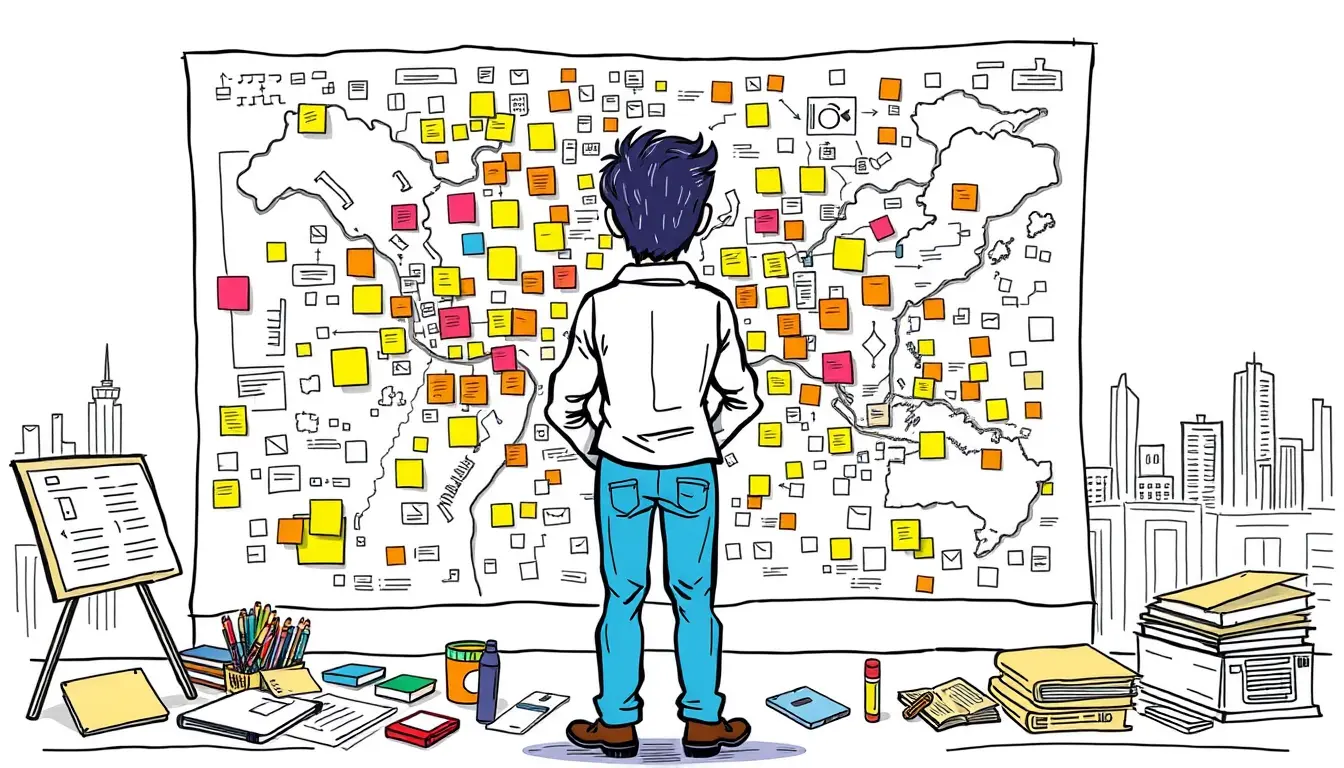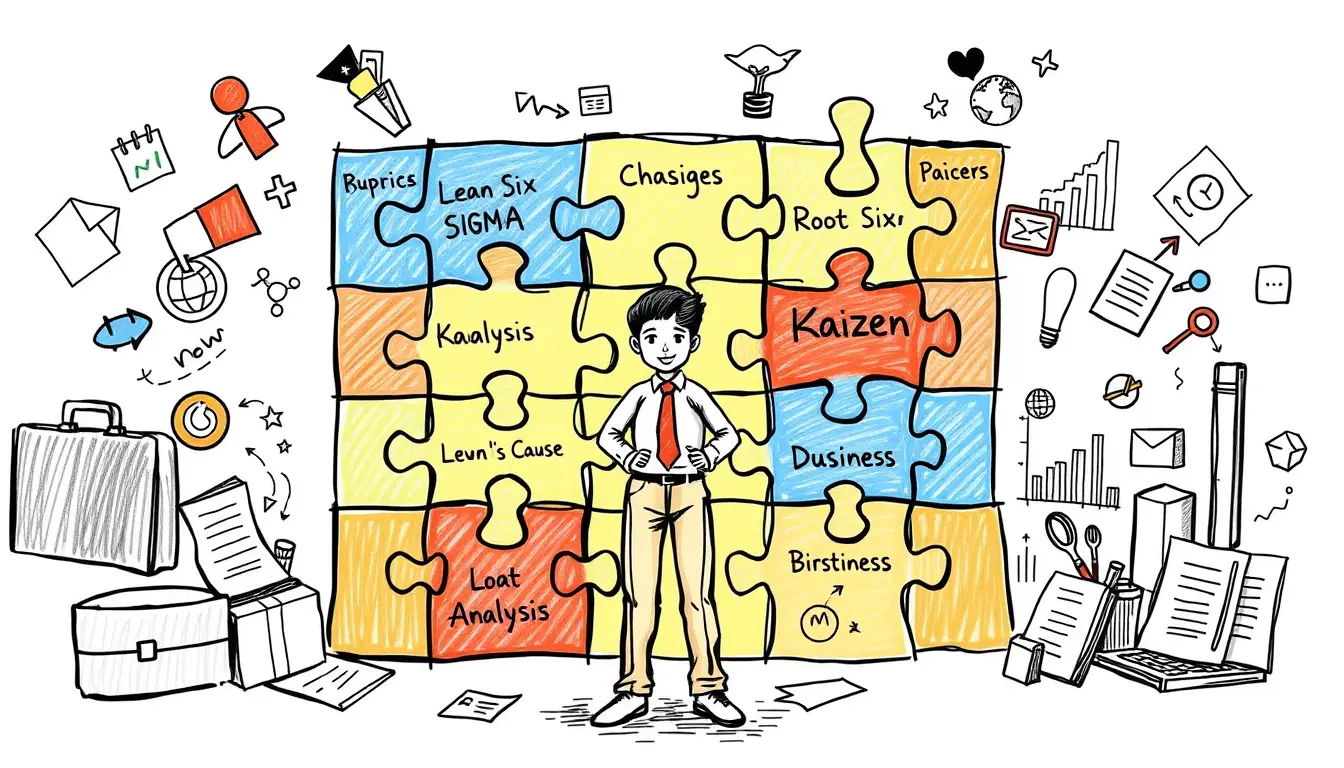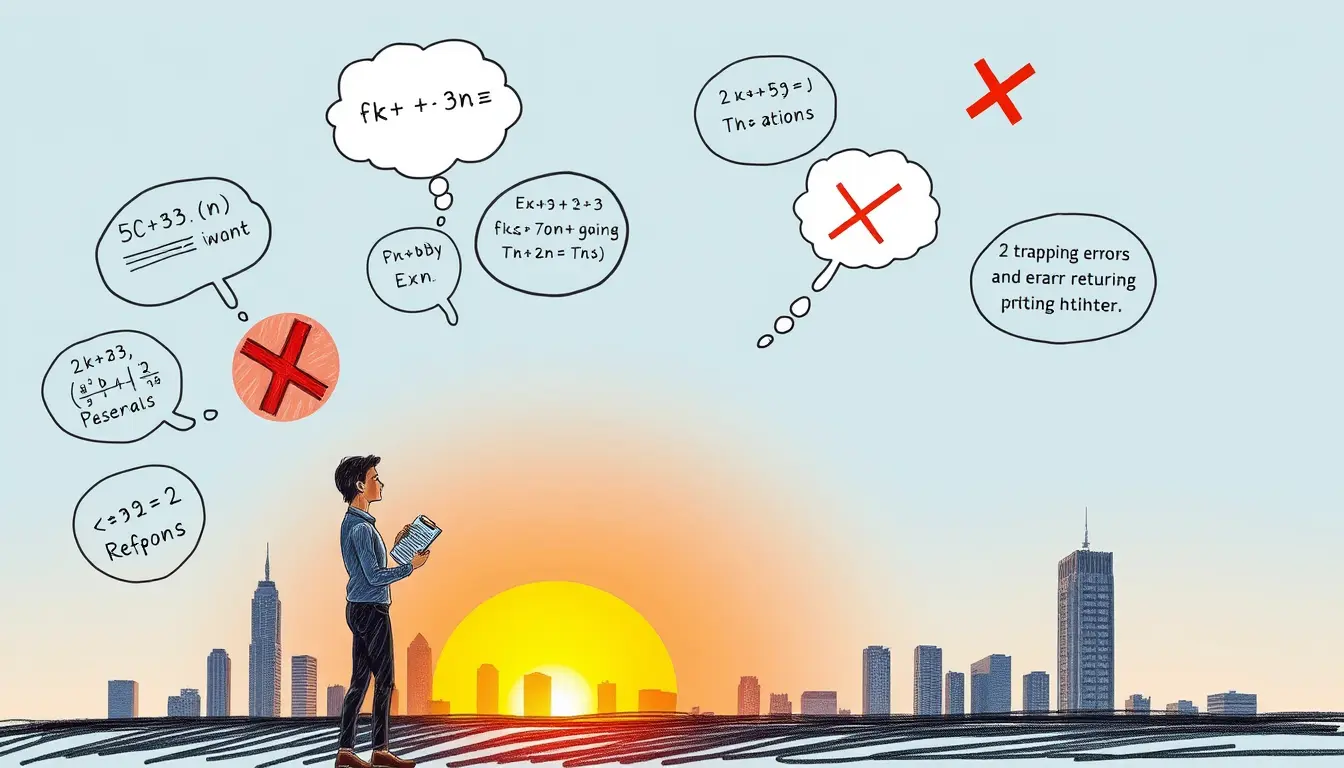What is User Story Mapping and Why is it Important for Project Execution?
User Story Mapping is a technique that allows teams to visualize and prioritize project requirements from the perspective of the end user. It provides a graphical representation of user stories, which are short descriptions of the features and functionality that the end user expects from the product or service. By creating a visual roadmap of the user’s journey, teams can better understand the overall flow of the project and identify any gaps or inconsistencies in the user experience.
User Story Mapping is important for project execution because it brings clarity and alignment to the development process. By mapping out the user stories, teams can gain a shared understanding of the project scope and the order in which features should be implemented. This helps to prevent misunderstandings and delays, as everyone has a clear vision of what needs to be accomplished. Furthermore, user story mapping allows teams to prioritize the most valuable features by focusing on the user’s needs and goals. This ensures that the development efforts are directed towards delivering the highest possible value to the end user. In summary, user story mapping enhances project execution by visualizing requirements, promoting collaboration, and enabling effective prioritization.
The Benefits of Using User Story Mapping in Project Planning
User story mapping is a valuable technique for project planning, providing numerous benefits to teams. One of the key advantages is that it helps visualize the big picture of a project, allowing stakeholders to see the entire flow and sequence of user stories. This visualization enables better decision-making and prioritization, as teams can easily identify dependencies, gaps, or areas where the user experience could be improved. By mapping out user stories, teams can also identify potential bottlenecks or areas of complexity early on, allowing for more accurate estimation and better resource allocation. This ultimately leads to more efficient and effective project planning, reducing the risk of unforeseen challenges and delays.
Another benefit of using user story mapping in project planning is the increased collaboration and alignment it fosters among team members and stakeholders. By involving the entire team in the mapping process, everyone gains a shared understanding of the product’s features, goals, and user needs. This collaborative approach encourages open communication and enables the team to make more informed decisions collectively. Furthermore, user story mapping encourages stakeholder engagement and buy-in, as they can actively participate in the process, provide feedback, and have a clear understanding of the project’s scope and priorities. Ultimately, this collaborative aspect leads to increased productivity, better teamwork, and a higher likelihood of delivering a successful project.
• User story mapping helps visualize the big picture of a project, allowing stakeholders to see the entire flow and sequence of user stories.
• It enables better decision-making and prioritization by identifying dependencies, gaps, or areas for improvement in the user experience.
• Mapping out user stories early on helps identify potential bottlenecks or areas of complexity, leading to more accurate estimation and resource allocation.
• Increased collaboration and alignment among team members and stakeholders is fostered through user story mapping.
• Involving the entire team in the mapping process promotes a shared understanding of product features, goals, and user needs.
• This collaborative approach encourages open communication and informed decision-making as a team.
• Stakeholder engagement is increased as they actively participate in the process, provide feedback, and understand project scope and priorities.
• The collaborative aspect leads to increased productivity, better teamwork, and higher chances of delivering a successful project.
How to Start User Story Mapping: Step-by-Step Guide
User story mapping is a valuable technique for planning and executing projects effectively. It provides a visual representation of user stories, which helps teams understand the user’s perspective and prioritize the most important features. To start user story mapping, follow these step-by-step guidelines.
The first step is to gather a diverse group of stakeholders, including product managers, developers, designers, and end-users. This ensures that all perspectives are taken into consideration during the mapping process. Next, identify the main goal of the project and break it down into smaller user activities. This helps in understanding the user’s journey and the tasks they need to accomplish. Once the user activities are identified, create user story cards that describe each activity. These cards should be concise, focusing on the user’s needs and goals. Finally, arrange the user story cards in a logical order, creating a visual representation of the user’s journey. This helps in identifying any gaps or missing features and allows teams to prioritize tasks based on the user’s needs. By following these steps, teams can effectively start user story mapping and create a solid foundation for project planning and execution.
Best Practices for Creating Effective User Stories in a Map
To create effective user stories in a map, there are several best practices that can be followed. Firstly, it is important to ensure that each user story is concise and focused. By keeping the user stories short and specific, it becomes easier to understand and communicate the needs of the users. This also aids in maintaining clarity and preventing confusion during the project execution.
Secondly, it is crucial to involve the stakeholders in the process of creating user stories. By gathering inputs and insights from the users, customers, and other project stakeholders, a comprehensive understanding of their needs and expectations can be gained. This collaborative approach ensures that the user stories accurately represent the requirements and goals of the project, making them more effective in guiding the project team. Additionally, involving stakeholders in the user story mapping process fosters a sense of ownership and promotes a shared understanding of the project objectives.
Techniques for Prioritizing User Stories in the Mapping Process
User story mapping is a valuable technique in project planning that helps teams prioritize their work effectively. Once the user stories are mapped out, the next step is to determine their priority. There are several techniques available for prioritizing user stories in the mapping process.
One common technique is the MoSCoW method, which stands for Must-have, Should-have, Could-have, and Won’t-have. This method involves categorizing user stories based on their level of importance and criticality to the project. By using this technique, teams can identify the must-have features that are essential for delivering value to the users and prioritize them accordingly. Should-have features are important but not crucial, while could-have features are nice to have but optional. Lastly, won’t-have features are excluded from the project scope. This method provides a clear understanding of the priority levels and helps guide the development process.
Another technique that can be used is the Weighted Shortest Job First (WSJF) method. This technique takes into account the value, effort, and risk associated with each user story. Value represents the impact or benefit that a user story brings to the users or the business. Effort reflects the complexity or amount of work required to implement the user story. Risk considers the level of uncertainty or potential issues associated with the user story. By assigning numerical values to these factors and calculating the weighted score, teams can prioritize user stories based on their overall value and manage the project resources effectively.
Collaborative Approaches for Gathering User Story Inputs
One of the key steps in user story mapping is gathering user story inputs. To ensure the accuracy and relevance of these inputs, it is crucial to adopt collaborative approaches. By involving stakeholders from different teams and perspectives, you can tap into a well-rounded pool of ideas and insights that contribute to a comprehensive user story map.
Effective ways to gather user story inputs collaboratively include conducting interviews with end-users, holding focus group discussions, and organizing brainstorming sessions with cross-functional teams. These approaches allow for diverse viewpoints to be shared and considered, ensuring that the user story map reflects the needs and expectations of the target audience. Additionally, collaborative approaches foster a sense of ownership and cooperation among team members, leading to a stronger commitment to the project and increased likelihood of project success.
How to Conduct Effective User Story Mapping Workshops
During a user story mapping workshop, it is important to create an environment that encourages collaboration and open communication. This can be achieved by gathering a diverse group of stakeholders, including developers, designers, and business analysts. By bringing together individuals with different perspectives and expertise, the workshop can benefit from a wide range of insights and ideas.
To start the workshop effectively, provide a clear agenda outlining the objectives, activities, and timelines for the session. This will help ensure that everyone is aligned and focused on achieving the desired outcomes. Encourage active participation by setting ground rules that promote respect and equal participation. Additionally, establish a safe space where participants feel comfortable sharing their thoughts and opinions. This can be achieved by fostering a non-judgmental atmosphere and actively listening to all ideas presented. By creating such an environment, the workshop will be more effective in generating valuable user story insights and mapping.
Tips for Managing and Organizing User Story Maps
User story maps are an invaluable tool for organizing and managing user requirements throughout the project lifecycle. To effectively manage and organize user story maps, it is essential to follow a few key tips. Firstly, it is important to regularly update and review the user story map to ensure it remains aligned with the project goals and evolving user needs. This can be done by scheduling regular team meetings to discuss any changes or updates that need to be made to the user story map.
Additionally, it is helpful to assign a dedicated team member or product owner to oversee the management of the user story map. This individual can take the responsibility of ensuring that all user stories are properly organized, prioritized, and kept up-to-date. They can also help facilitate communication and collaboration between team members, ensuring that everyone understands the purpose and progress of the user story map. By following these tips, project teams can effectively manage and organize their user story maps, leading to improved project execution and successful delivery of valuable products or services.
Integration of User Story Mapping with Agile Project Management
User story mapping is an effective technique that can be seamlessly integrated with agile project management methodologies. By incorporating user story mapping into the agile framework, teams can enhance project planning, improve collaboration, and ultimately deliver a product that meets the needs of the end-users.
One of the main advantages of integrating user story mapping with agile project management is the ability to prioritize and sequence the user stories in a way that aligns with the project goals and objectives. User story mapping allows project teams to visualize the entire scope of the product, identify dependencies, and determine the most effective sequence for the development process. This integration ensures that the team focuses on delivering the most valuable functionality early on, allowing for continuous feedback and iteration throughout the project lifecycle. Additionally, user story mapping provides a comprehensive view of the product backlog, enabling agile teams to plan and prioritize effectively, allocate resources efficiently, and adapt to changing requirements in a timely manner.
Common Challenges in User Story Mapping and How to Overcome Them
One common challenge in user story mapping is the difficulty in capturing all the necessary details and breaking them down into small, manageable chunks. When mapping user stories, it is crucial to ensure that each story is complete, concise, and actionable. This can be challenging, especially when dealing with complex projects or when there are multiple stakeholders involved. To overcome this challenge, it is important to carefully analyze each user story and identify any missing information or gaps. Regular communication and collaboration with stakeholders can help in refining the user stories and ensuring that all the necessary details are captured.
Another challenge in user story mapping is the risk of overcomplicating the process. User story mapping can become overwhelming if too many details are included or if the map becomes too complex to understand. This can lead to confusion among team members and make it difficult to prioritize and manage the user stories effectively. To overcome this challenge, it is important to keep the user story map simple and focused. Break down the project into smaller, manageable increments and prioritize the user stories based on their importance and value. Regularly review and update the user story map to ensure that it remains clear and concise throughout the project execution.
What is user story mapping and why is it important for project execution?
User story mapping is a technique used in project planning to visualize the user journey and identify the necessary features and functionalities. It helps teams understand the user’s perspective and prioritize the development process accordingly. User story mapping is important for project execution as it ensures alignment with user needs, promotes collaboration, and helps in delivering a product that meets user expectations.
What are the benefits of using user story mapping in project planning?
User story mapping provides several benefits in project planning. It helps in visualizing the entire user journey, breaking down complex projects into manageable chunks, prioritizing features based on user needs, fostering collaboration among team members, facilitating effective communication, and ensuring a user-centric approach to development.
Can you provide a step-by-step guide on how to start user story mapping?
Sure! Here are the steps to start user story mapping:
1. Define the project scope and goals.
2. Identify the target users and their personas.
3. List out the user activities or tasks.
4. Arrange the user activities on a horizontal axis.
5. Identify the user stories associated with each activity.
6. Arrange the user stories vertically according to priority.
7. Refine and iterate the user story map as needed.
What are some best practices for creating effective user stories in a map?
To create effective user stories in a map, consider the following best practices:
1. Use simple language and focus on user needs.
2. Keep user stories concise and specific.
3. Include acceptance criteria for each user story.
4. Use user-centered language and avoid technical jargon.
5. Ensure user stories are independent and not interdependent.
6. Continuously refine and update user stories based on feedback and changing requirements.
What techniques can be used for prioritizing user stories in the mapping process?
There are various techniques for prioritizing user stories in the mapping process, including:
1. MoSCoW method (Must, Should, Could, Won’t).
2. Kano model (Customer satisfaction and delight).
3. Value vs. Effort matrix (Impact vs. effort required).
4. Weighted scoring (Assigning scores to user stories based on importance).
5. Cost of delay (Determining the cost of delaying the delivery of a user story).
How can collaborative approaches be used for gathering user story inputs?
Collaborative approaches can be used to gather user story inputs by involving stakeholders, end users, and cross-functional team members in the process. Techniques such as brainstorming sessions, workshops, interviews, and surveys can be conducted to gather insights, feedback, and requirements from different perspectives. These collaborative approaches ensure a comprehensive understanding of user needs and foster a sense of ownership among team members.
What are some tips for conducting effective user story mapping workshops?
Here are some tips for conducting effective user story mapping workshops:
1. Set clear objectives and goals for the workshop.
2. Prepare in advance by gathering relevant information and materials.
3. Ensure active participation from all workshop attendees.
4. Facilitate open and constructive discussions.
5. Use visual aids and tools to enhance understanding and collaboration.
6. Encourage creativity and out-of-the-box thinking.
7. Document and share the output of the workshop for future reference.
How can user story maps be effectively managed and organized?
To effectively manage and organize user story maps, consider the following tips:
1. Use a digital tool or software for easy access and collaboration.
2. Keep the user story map up-to-date with the latest changes and priorities.
3. Regularly review and refine the user story map as the project progresses.
4. Categorize user stories based on themes or user activities.
5. Prioritize and assign tasks to team members for efficient execution.
6. Share the user story map with stakeholders for feedback and transparency.
How can user story mapping be integrated with agile project management?
User story mapping can be integrated with agile project management by using the user story map as a visual guide for sprint planning, backlog management, and prioritization. The user story map helps in breaking down the project into user-centric features and epics, which can then be further divided into user stories for agile development. The agile team can use the user story map as a reference throughout the project to ensure alignment with user needs and track the progress of development.
What are some common challenges in user story mapping and how can they be overcome?
Common challenges in user story mapping include:
1. Lack of clarity or understanding of user needs.
2. Difficulty in prioritizing and organizing user stories.
3. Inadequate collaboration and communication among team members.
4. Managing and accommodating changing requirements.
5. Balancing the level of detail in user stories.
These challenges can be overcome by involving stakeholders and users in the process, conducting workshops and brainstorming sessions, continuously refining the user story map, documenting and sharing the map for clarity, and adopting an iterative approach to accommodate changes.














Leave a Reply